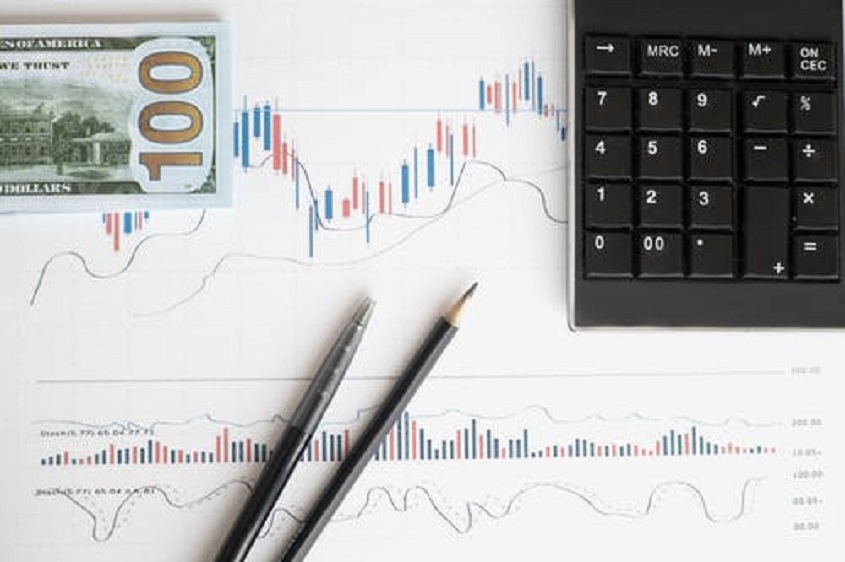
An exchange-traded fund is a type of investment fund and exchange-traded product, i.e. they are traded on stock exchanges. ETFs are similar in many ways to mutual funds, except that ETFs are bought and sold throughout the day on stock exchanges while mutual funds are bought and sold based on their price at day’s end. An exchange traded fund (ETF) is a type of security that tracks an index, sector, commodity, or other asset, but which can be purchased or sold on a stock exchange the same as a regular stock. An ETF can be structured to track anything from the price of an individual commodity to a large and diverse collection of securities. ETFs can even to be structured.
An ETF is called an exchange traded fund since it’s traded on an exchange just like stocks. The price of an ETF’s shares will change throughout the trading day as the shares are bought and sold on the market. This is unlike mutual funds, which are not traded on an exchange, and trade only once per day after the markets close. Additionally, ETFs tend to be more cost-effective and more liquid when compared to mutual funds. Rack specific investment strategies.
Cash Invested in ETFs
An ETF is a type of fund that holds multiple underlying assets, rather than only one like a stock. Because there are multiple assets within an ETF, they can be a popular choice for diversification. An ETF can own hundreds or thousands of stocks across various industries, or it could be isolated to one particular industry or sector. Some funds focus on only U.S. offerings, while others have a global outlook. For example, banking-focused ETFs would contain stocks of various banks across the industry.
Types of ETFs
There are various types of ETFs available to investors that can be used for income generation, speculation, price increases, and to hedge or partly offset risk in an investor’s portfolio. Below are several examples of the types of ETFs.
• Bond ETFs might include government bonds, corporate bonds, and state and local bonds—called municipal bonds.
• Industry ETFs track a particular industry such as technology, banking, or the oil and gas sector.
• Commodity ETFs invest in commodities including crude oil or gold.
• Currency ETFs invest in foreign currencies such as the Euro or Canadian dollar.
• Inverse ETFs attempt to earn gains from stock declines by shorting stocks. Shorting is selling a stock, expecting a decline in value, and repurchasing it at a lower price.
How to Buy and Sell ETFs
ETFs trade through online brokers and traditional broker-dealers. You can view some of the top brokers in the industry for ETFs with Investopedia’s list of the best brokers for ETFs. An alternative to standard brokers are robo-advisors like Betterment and Wealthfront who make use of ETFs in their investment products.
ETF Creation and Redemption
The supply of ETF shares is regulated through a mechanism known as creation and redemption, which involves large specialized investors, called authorized participants (APs).
Creation
When an ETF wants to issue additional shares, the AP buys shares of the stocks from the index—such as the S&P 500 tracked by the fund—and sells or exchanges them to the ETF for new ETF shares at an equal value. In turn, the AP sells the ETF shares in the market for a profit. The process of an AP selling stocks to the ETF sponsor, in return for shares in the ETF, is called creation.
Creation When Shares Trade at a Premium
Imagine an ETF that invests in the stocks of the S&P 500 and has a share price of $101 at the close of the market. If the value of the stocks that the ETF owns was only worth $100 on a per share basis, then the fund’s price of $101 is trading at a premium to the fund’s net asset value (NAV). The NAV is an accounting mechanism that determines the overall value of the assets or stocks in an ETF.
Redemption When Shares Trade at a Discount
Imagine an ETF that holds the stocks in the Russell 2000 small-cap index and is currently trading for $99 per share. If the value of the stocks the ETF is holding in the fund is worth $100 per share, then the ETF is trading at a discount to NAV. And likewise if one need a project report for their new start-ups for that they need to know first what Project Report is, what is CMA Data etc. so they can get their reports. Once they decide what type of report they need for their start-up like Project Report for Industries, Project Report in entrepreneurship, Company Project Report, etc. they can do further process. Or they can get Mudra Loan Project Report on their any type of project report.
LoanDPR.com is an online platform for generating Project Reports to get bank loans and even project reports for subsidy. Whether you are a New Start-up Company or an Established Company, user can create Project Report required for bank loan and also required CMA reports. It’s User Friendly and Do it by Yourself Platform, created for End Users, Entrepreneurs, Business Owners, Chartered Accountants, Tax Consultants, Finance Professionals, Bank Employees etc. You can generate Business Project Report for Bank Loan and also prepaid Project Report in just 10 minutes by using user interface provided by LoanDPR.com
For any assistance or more information feel free to contact us at contact@LoanDPR.com or at WhatsApp no. +91-8459973683 or +91-8459941735


 Total Visitors : 5721
Total Visitors : 5721 Total views : 12588
Total views : 12588